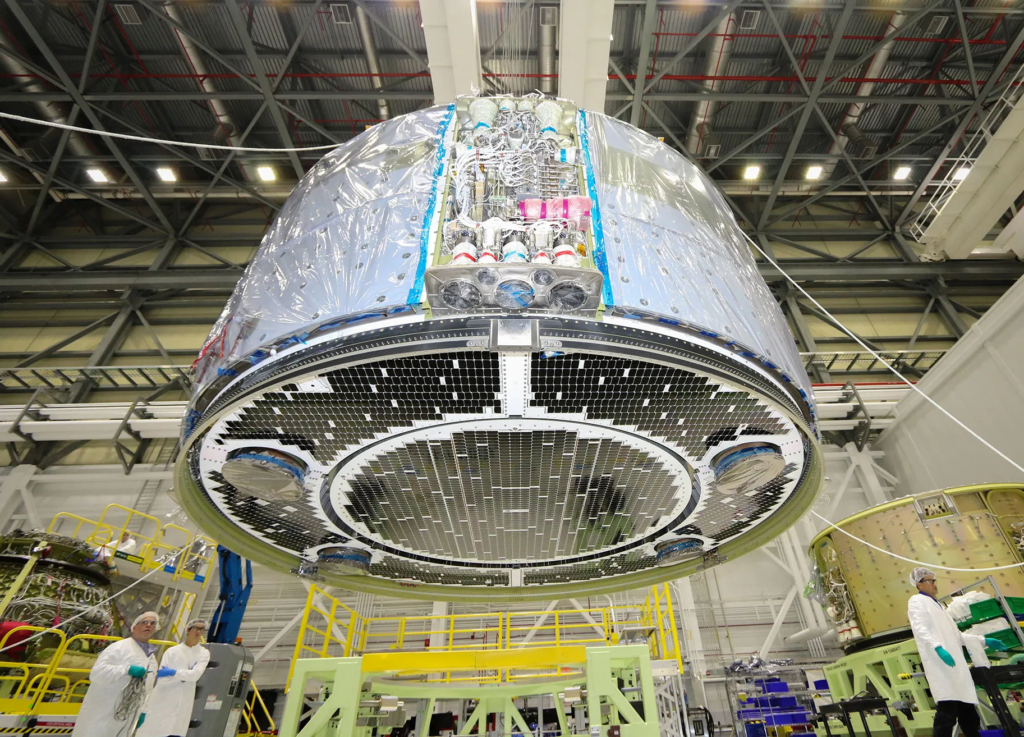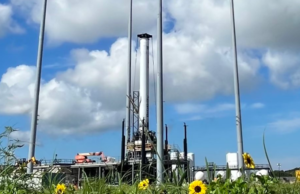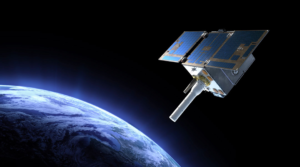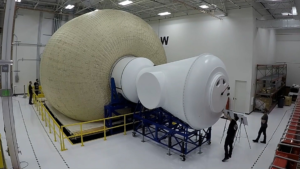
Starliner’s First Crewed Mission Delayed Until Mid-2024
A few months ago in June, we learned that two different issues discovered back around May with Boeing’s Starliner spacecraft would delay the first crewed launch. This launch had been pushed back a few times and most recently was set to happen in July. With quite a lot of work still left, the company and agency weren’t exactly sure when Starliner would be ready to launch crew.
Now in early August, they seem to have a better idea with reports coming out that the launch will happen no earlier than March 2024. This is quite a significant delay and based on comments from the agency and Boing officials, even this date is somewhat up in the air depending on upcoming fixes and tests. This is far from ideal and will continue to hurt the Starliner program.
Only recently did the program losses grow to $1.1 billion after being charged for another delay. Here I will go more in-depth into the progress Boeing has made, new comments from NASA and the Starliner program officials, a realistic launch date, and more.
Official Launch Delay

Yesterday on the 7th, NASA and Boeing hosted a media teleconference to provide an update on the first astronaut flight of the company’s CST-100 Starliner to and from the International Space Station. The last we heard was that the mission was delayed indefinitely with two major problems needing attention.
During the teleconference however, we learned that Boeing has delayed the first flight of its CST-100 Starliner commercial crew vehicle with astronauts on board to no earlier than March 2024 as the company continues to work on issues with the spacecraft’s parachutes and wiring. Officials highlighted that progress was going very well however they need more time to address each problem.
During the teleconference, Steve Stitch, manager of NASA’s Commercial Crew Program was quoted saying, “I will tell you that the team has made a tremendous amount of progress since we last spoke back in early June. We have learned a lot about the various issues with the P2-13 tape and the soft links on the parachutes. I’m extremely proud of the entire NASA and Boeing Team and also the suppliers who rolled up their sleeves and made a tremendous amount of progress. I would say first of all on the parachutes where we had the soft link issue that we talked about last time, this particular area that didn’t have the safety factor of 2.0 required for a safety critical system, that has been redesigned by the team. They’re in the middle of testing that design. They had a very productive technical meeting in early July at the supplier. Not only did they redesign that particular joint but also went through and looked at all the rest of the areas on the main canopies, and the drouges, and the four heat shield parachutes, and the pilot chutes, and didn’t really find any other areas where we had a joint that was improperly designed” he said.
He went on to talk about the tape and how this issue even occurred in the first place. Here he mentioned, “On the P2-13 tape, this is a tape that is widely used across the aerospace industry for many applications for protecting wires from abrasion. I would say from the NASA database, the entries in the database were a bit inconsistent relative to the flammability of that tape at various levels of oxygen concentration. So it was a bit confusing as to when it could be used and when it couldn’t” he said. This comment is a bit concerning as this mix-up ended up happening on a crewed spacecraft preparing to launch.
In addition, Mark Nappi, Boeing vice president and program manager for Starliner was quoted saying, “Right now, based on the current plans, we’re anticipating that we’re going to be ready with the spacecraft in early March,” he said. However, he clarified that he doesn’t mean that the CFT launch will take place in March. He said Boeing will have to work with NASA on ISS schedules, as well as United Launch Alliance on Atlas 5 launch schedules, to set a date. “We’ll work that throughout the next several weeks and see where we can fit in, and then we’ll set a launch date.” To add to these delays, they pointed out that March is typically when Roscosmos performs crew rotations using its Soyuz spacecraft, which could limit CFT opportunities that month. “We have not taken the vehicle readiness and mapped it into when we can find a date” that works with both the station and ULA, he said. “That’s really the next step.” These delays are also causing concern for the first operational mission which is meant to happen after a successful demo flight.
Program Concerns

A few months ago in May, Boeing and NASA were both preparing for a Starliner launch in July. At the time Steve Stich had said, “We are taking a methodical approach to the first crewed flight of Starliner incorporating all of the lessons learned from the various in-depth testing campaigns, including Starliner’s flight tests and the agency’s verification efforts. All Orbital Flight Test-2 anomalies are closed. In addition to the closeout of ongoing work, the team remains vigilant on tracking new technical issues as we complete certification for crewed flight” he said. Back in May, 95% of the Crew Flight Test certification products were complete. That included approval of Starliner’s crew module batteries, based on additional testing and analysis, along with post-certification flight mitigations and a proposed battery upgrade for future missions. Teams were conducting final spacecraft closeouts and preparing for upcoming hardware milestones, including spacecraft fueling, spacecraft rollout to the launch site, and integration with the United Launch Alliance Atlas V rocket.
However, engineers were also working to evaluate any elevated risk from a specific type of tape used on the spacecraft to protect wires from chafing. It was later revealed that this tape was indeed flammable and needed to be removed. By now, workers have removed about 85% of the tape in the upper part of the spacecraft. In the lower part of the spacecraft, some tape is hard to remove or could cause damage if its removed, said Nappi. Engineers have developed protective barriers and coatings, or can wrap the P-213 tape with acceptable tape, to mitigate the flammability hazard. “Based on the area, we’ll apply the right remediation technique.”
The other problem discovered had to do with “soft links” in the parachutes that were weaker than expected, preventing the overall parachute system from achieving the factor of safety required for crewed flights. “That has been redesigned by the team. They’re in the middle of testing that design,” said Steve Stich. That testing will include a drop test scheduled for the latter half of November, said Mark Nappi. That test will also verify an updated overall design for the parachute that had been intended for the first operational flight of Starliner, but will be pulled forward for this Crew Flight Test (CFT) mission.
Stich highlighted that a single test of the parachute will be sufficient, compared to a series of drop tests for a revision of parachutes. “When we looked at the changes that we’re talking about, we felt like we only needed one test” to verify those changes, he said, which he described as much less significant than the earlier SpaceX parachute changes. “The design changes were, what I would say, minimal as opposed to what we had for Dragon, which was really a wholesale change in the canopy.”
“Crew safety remains the highest priority for NASA and its industry providers, and emerging issues are not uncommon in human spaceflight, especially during development,” said Stich. “If you look back two months ago at the work we had ahead of us, it’s almost all complete. The combined team is resilient and resolute in their goal of flying crew on Starliner as soon as it is safe to do so. If a schedule adjustment needs to be made in the future, then we will certainly do that as we have done before. We will only fly when we are ready.”
In addition to these two main problems, there are a few other boxes to check before Starliner and its crew can launch atop United Launch Alliance’s (ULA) Atlas V rocket. “We’re now working with NASA’s Commercial Crew Program, ISS, and ULA on potential launch dates based on our readiness,” Nappi said. “It’s a complicated manifest on ISS, as you all know, and the launch pad of ULA. Despite the delays, the company remains committed to Starliner and fulfilling its contractual obligations to NASA (at least seven crewed flights to the ISS, including CFT), Nappi added.
Back in 2011, Boeing announced the completion of a set of ground drop tests to validate the design of the airbag cushioning system. The airbags are located underneath the heat shield of the Starliner, which is designed to be separated from the capsule while under parachute descent at about 1,500 m (4,900 ft) altitude. A pad abort test took place on November 4, 2019. The capsule accelerated away from its pad, but then one of the three parachutes failed to deploy, and the capsule landed with only two parachutes. Landing was, however, deemed safe, and the test a success. Boeing did not expect the malfunction of one parachute to affect the Starliner development schedule.
Conclusion
Boeing is continuing to try and fix both the parachutes and the flammable tape on Starliner. New reports reveal that the launch will happen no earlier than March 2024, and realistically close toward the middle of the year. We will have to wait and see how it progresses and the impact it has on the space industry.



